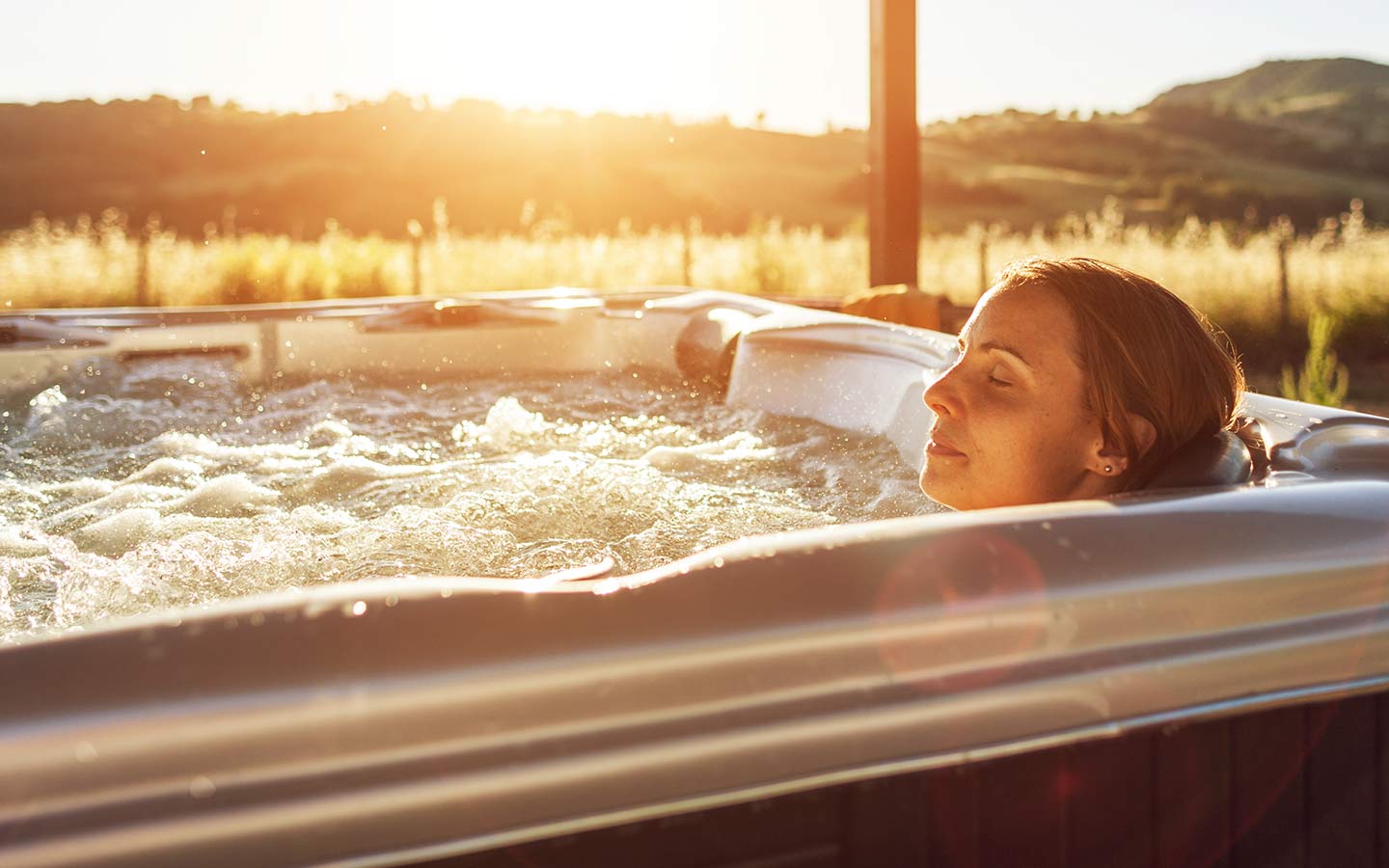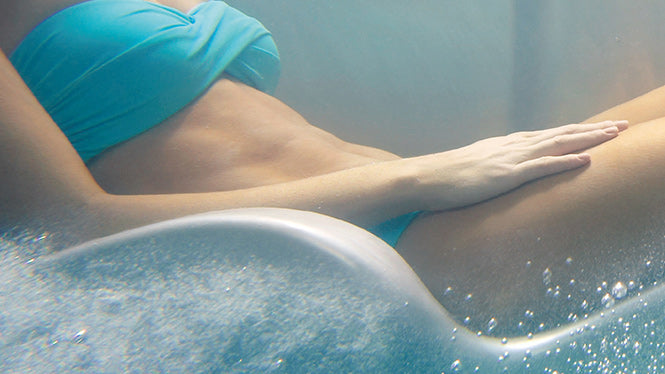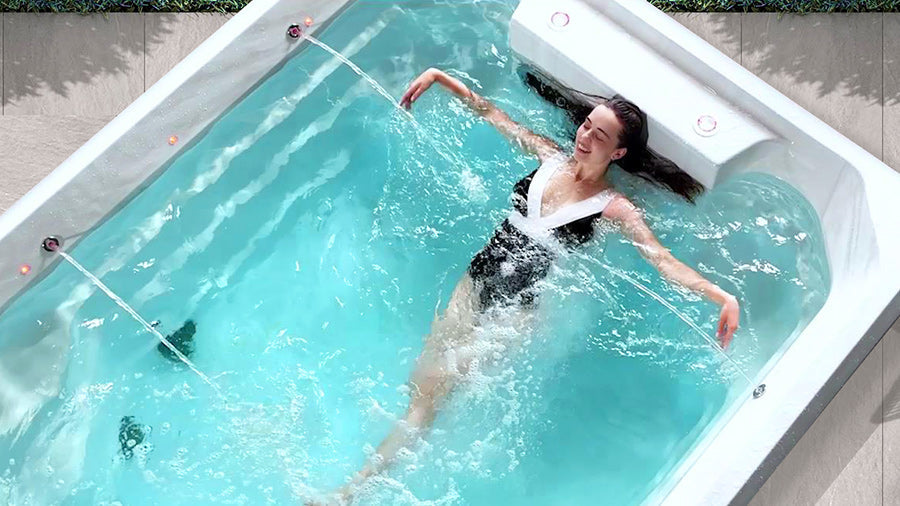Maintaining Correct Water Balance
Correct water balance ensures that equipment and surfaces are protected and that water is comfortable for bathers.
Water quality will differ from area to area around the country. It is recommended that you regularly test your water using Test Strips, to enable you to test and adjust if required.
Do I need to use Chemicals?
Yes. You need the proper hot tub chemicals to maintain your tub clean and safe for soaking in. However, which ones? When do you include them? How much of each do you need, exactly? And how exactly do you include them into your hot tub?
What Chemicals Do I Need?
Sanitiser
Sanitiser is the most crucial spa chemical you'll use. It keeps your spa water sterilised an safe. The first thing to pick is which hand sanitizer you want to use. There are three common options in use in Australia today.
Chlorine
The most popular sanitizer is chlorine, which has a few benefits over the others: It is economical. It is simple to manage and add. It kills bacteria and algae aggressively.
Chlorine destroys pollutants. And emits a smell duering the process. This is as it oxidises and dissolves into its chemical constituents. The oxidation produces chloramines as a byproduct of this chemical reaction. The chloramines are responsible for the chlorine scent.
If you can smell chlorine your water doesn't contain enough chlorine. Test your water and shock your water to fast bring it back up, get rid of the chloramines, and put the chlorine back to work removing impurities if necessary.
Bromine
The second-most often used sanitizer after chlorine, bromine has one major advantage over chlorine: it doesn't oxidise, therefore it doesn't release chloramines. Instead, pollutants are disassembled at the molecular level by bromine, which ionises contaminants.
Other benefits of bromine over chlorine include: Since it has a lower pH than chlorine, maintaining the balance of the water is a little bit simpler. It lasts more time. It treats your skin more gently.
Biguanide
Biguanide, a non-chlorine sanitizer that goes by the brand names BaquaSpa, is just as effective at killing bacteria as chlorine and bromine.
There are a few additional benefits as well. It doesn't require as much use as chlorine or bromine. At every level, there is no smell. You and your hot tub guests will notice that the water is smoother as a result.
What is Spa Shock?
A water treatment called Spa Shock oxidises (gases off) sweat, body oils, dead chloramines, and other contaminants from your hot tub water.
There are typically two different varieties of Spa Shock. There are two types of shock: chlorine-based shock (Sodium Dichlor), which both sanitises the water and raises your sanitizer levels, and non-chlorine-based shock (Potassium Monopersulfate or MPS), which only oxidises the water.
Spa shock's primary function is to decompose organic waste pollutants, which are to blame for foul smells and hazy or frothy hot tub water. It accomplishes this by swiftly eliminating the outer electrons from impurities in the water that the spa shock comes into contact with. This process is known as oxidising the water.
For safe, sanitary, and crystal-clear hot tub water, occasional shocking is necessary, regardless of the sanitising system you employ. Additionally, regular application of spa shock will ensure that your sanitizer operates at its best. It is the best primary shock to regularly combine with any of these sanitizers.
Understanding Total Alkalinity
The capacity of your hot tub water to neutralise acids is measured by its total alkalinity. It's a crucial component of pH balancing and is occasionally referred to as a "buffer" since it enables water to withstand abrupt pH shifts.
Unbalanced alkaline levels can cause your skin to become dry and can also have a negative impact on the appearance of the water in your hot tub (giving it a green tint). The more dangerous of the two extremes is low alkalinity. Because the water can't as effectively neutralise the effects of acids, such as those caused by acid rain or naturally existing minerals, it might result in green water and quick pH changes.
The recommended range for total alkalinity is 80–120 ppm.
The importance of Spa Water pH
Managing pH and total alkalinity levels are essential for achieving optimum spa water chemistry balance. Correct spa water pH levels keep your bathers safe, and prevent cloudiness and scale deposits. In this guide we'll outline how you can do this to keep your spa water pH levels between the ideal range.
On the Spa water pH scale, 7 is perfectly neutral water. pH Levels lower than 7 are more acidic, and those higher than 7 are more basic. If you water pH varies too far on either side of 7, you can experience potentially water for your bathers or damaging water for your spa equipment.
One of the main reasons of hazy spa water is an excessively high pH. Try using a pH decreaser to bring things down to normal if the level rises beyond 7.6 and you start to see issues. Remember that using a pH increaser can also increase the alkalinity, thus if the level is too low, you should test it again and maybe make adjustments.
If both the pH and alkalinity levels are low, raising both will be accomplished by adding an alkalinity increaser; however, if the alkalinity increaser does not raise the pH to the proper level, pH adjustment will need to be made.
Low pH and alkalinity might harm your spa Scaling can be brought on by high pH and alkalinity, which can potentially harm the equipment. The heater is in danger on both sides. Low pH will cause the heater element to corrode and eat away, and high pH will deposit scale around the element, making the heater work harder to heat your hot tub.
Use a pH decreaser to bring the pH and alkalinity levels back to normal if they are both too high.
How Do I Test My Spa To Ensure It Is Ready To Use?
When we test our Spa water we are testing for correct water balance. To test pH, alkalinity and calcium levels in the water, use the Spa test strips.
Remove the strip from the vial and swirl beneath the surface of the spa water 2 to 3 times then line the strip up against the outside of the container. (Do not shake water from the strip).
Maintain alkalinity at 80 - 120 ppm and pH at 7.2 - 7.6. Using the label, determine the correct amount of Spa Fresh Alkalinity &pH Increaser required. Scoop up container of spa water and add the required dosage of Spa Fresh Alkalinity & pH Increaser. Dissolve Spa Fresh Alkalinity & pH Increaser completely in the bucket & pour back into spa. Re-check pH & alkalinity using Test Strips. Repeat process if needed to attain correct level.
Why Is My Water Cloudy?
Cloudy spa water can result from a heavy bather load. It can also be a result of dirty filter cartridges, clean with Spa Fresh Filter Scrub as per instructions. Other causes can be insufficient filtering time, pH and alkalinity out of balance or incorrect dose rate and low levels of calcium hardness (particularly with tank water). Sometimes it is simply time to dump the spa water.
Optimum Spa Water Care Tips
- Fill your spa through the filter box
- Test and adjust your spa water balance 2-4 times per week.
- Never leave a Spa empty in the direct sun
- Don't wear clothes in the Spa washed in washing powder
- Don't enter the Spa with oils and body lotions on your body
SPA TIP: Human skin prefers an environment close to neutral pH level. Also, chemicals work most efficiently in water that is closer to neutral pH levels.
We recommend SPA FRESH Sanitiser as it works efficiently at 7.0 - 7.8 pH, making it very acceptable to our skin. Maintaining pH in this band also protects the spa equipment.
Summary
Maintaining optimum water balance and clean pipes and filters will pay off over and over again. You can head off most chemistry problems that an wreak havoc on your bathers and your spa equipment.
Also it is best practice to change the spa water completely at least every three or four months. This will prevent having to struggle to to balance poorly balance water in the first place.





Share:
What is Ozone Sanitisation?
Starting The Spa With New Water